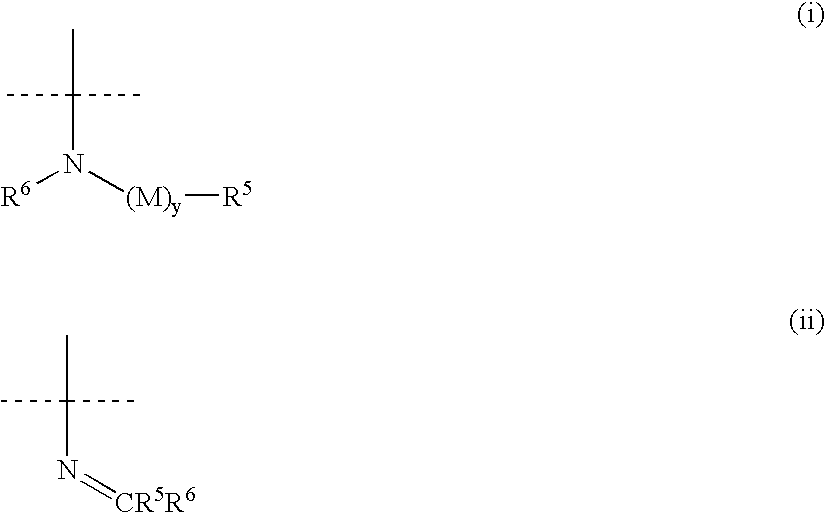Aryl and heteroaryl propene amides, derivatives thereof and therapeutic uses thereof
a technology of aryl and heteroaryl propene amide and derivatives, applied in the field of compositions, can solve the problems of difficult (if not impossible) selectively administering therapeutic ionizing radiation to abnormal tissue, adverse effects of ionizing radiation on cells and tissues, and exposure of normal tissue proximate to abnormal tissue to potentially damaging doses of ionizing radiation, so as to reduce or eliminate the effect of ionizing radiation on normal calls and safely increasing the dosage of therapeuti
- Summary
- Abstract
- Description
- Claims
- Application Information
AI Technical Summary
Benefits of technology
Problems solved by technology
Method used
Image
Examples
example 1
(E)-N-(4-Methoxyphenyl)-3-(2,4,6-trimethoxyphenyl)-2-propen-amide
[0599] A solution of 4-methoxyphenylamino-3-oxoprpanoic acid and 2,4,6-trimethoxy benzaldehyde was reacted according to General Procedure 1. The title compound, melting point 198-200° C, was thereby obtained in 78% yield.
[0600] NMR (DMSO-d6),δ3.78 (s, 3H), 3.86 (s, 6H), 3.88 (s, 3H), 6.13 (s, 2H), 6.85 (d, 1H vinylic), 6.88-7.56 (m, aromatic), 8.12 (d, 1H vinylic, J=16.0 Hz).
example 2
(E)-N-(4-Methophenyl)-3-(2,6-dimethoxypheyl)-2-propenamide
[0601] A solution of 4-methoxyphenylamino-3-oxoprpanoic acid and 2,6-dimethoxy benzaldehyde was reacted according to General Procedure 1. The title compound, melting point 203-204° C., was thereby obtained in 63% yield.
[0602] NMR (DMSO-d6), δ 3.80 (s, 3H), 3.90 (s, 6H), 7.0 (d, 1H vinylic, J=15.5 Hz), 6.57-7.57 (m, aromatic), 8.17 (d, 1H vinylic, J=15.5 Hz).
example 3
(E)-N-(4-Methoxy-3-nitropheneyl-3-(3,4,5-trimethoxphenyl-2-propenamide
[0603] A solution of 4-methoxy-3-nitroaniline and 3,4,5-trimethoxy cinnamic acid was reacted according to General Procedure 3. The title compound, melting point 186-189° C., was thereby obtained in 35% yield.
[0604] NMR (DMSO-d6), δ 3.84 (s, 3H), 3.90 (s, 9H), 7.2 (d, 1H vinylic, J=16.0 Hz), 7.37-8.20 (m, aromatic).
PUM
 Login to View More
Login to View More Abstract
Description
Claims
Application Information
 Login to View More
Login to View More - R&D
- Intellectual Property
- Life Sciences
- Materials
- Tech Scout
- Unparalleled Data Quality
- Higher Quality Content
- 60% Fewer Hallucinations
Browse by: Latest US Patents, China's latest patents, Technical Efficacy Thesaurus, Application Domain, Technology Topic, Popular Technical Reports.
© 2025 PatSnap. All rights reserved.Legal|Privacy policy|Modern Slavery Act Transparency Statement|Sitemap|About US| Contact US: help@patsnap.com



